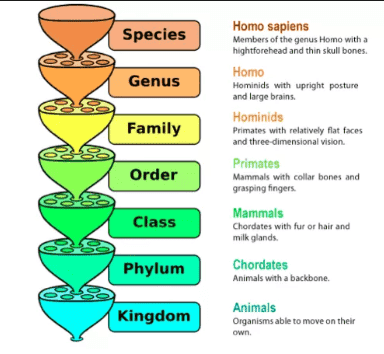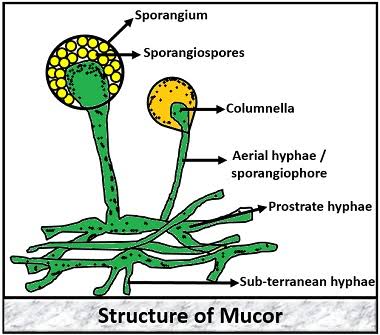FUNGAL THALLUS|FUNGI THALLUS |THALLUS OF FUNGI
The body of the fungus is named as 'thallus'.
Also read- Fungal Cell Structure
Eucarpic thallus
The thallus is differentiated into vegetative part, which absorbs nutrients, and a reproductive part, which forms plant organ . Such thalli are called as eucarpic. e.g. Pythium aphanidermatum.
 |
| Source Wikipedia |
Holocarpic thallus
The thallus does not show any differentiation on vegetative and reproductive structure. After a phase of vegetative growth, it gets converted into one or more reproductive structures. Such thalli are called as 'holocarpic' e.g. yeast, Synchytrium endobioticum
 |
| Source Wikipedia |
Hyphae
Hyphae may be a tubular, transparent filament, usually branched, composed of an outer cell membrane and a cavity (lumen) lined or crammed with protoplasm including cytoplasm. Hyphae are divided into cells or components by cross walls called septa and are generally called as septate (with cross wall) or coenocytic (aseptate -without cross wall). Measure of hyphae in most of the fungi across 5-10 μm.
 |
| Source wikipedia |
Mycelium
The hyphal mass or network of hyphae constituting the body (thallus) of the fungus is named as mycelium. The mycelium of parasitic fungi grows on the surface of the host and spread between the cells and it's called intercellular mycelium. The mycelium of parasitic fungi, which grows on the surface of the host and penetrates into the host cells and is named intracellular mycelium. If the mycelium is intercellular, food is absorbed through the host cell membrane or walls If the mycelium penetrates into the cells, the hyphal walls inherit direct contact with the host protoplasm. Fungi with intercellular hyphae, especially obligate parasites of plants (fungi causing downy mildews, powdery mildews and rusts) obtain nutrients through haustoria.
Also read- Fungi general characters
Monokaryotic mycelium (uninucleate)
Mycelium contains single nucleus that sometimes forms a part of haplophase within the life cycle of fungi.
Dikaryotic mycelium (binucleate)
Mycelium contains pair of nuclei (dikaryon), which denotes the diplophase within the life cycle of fungi.
Homokaryotic mycelium
The mycelium contains genetically identical nuclei.
Heterokaryotic mycelium
The mycelium contains nuclei of different genetic constituents.
Multinucleate
The fungal cell contains more than 2 nuclei.
Septa
Transverse septa occur within the thallus of all filamentous fungi to chop off reproductive cells from the remainder of the hypha, to screen off the damaged parts or to divide the hypha into irregular or regular compartments or cells. There are two general sorts of septa in fungi viz., primary and adventitious. The adventitious septa are formed independently of nuclear division and are especially associated with changes in the concentration of the protoplasm as it moves from one part of the hypha to another.
 |
| Source wikipedia |
Transverse septa
Septa vary within the ir construction septa have biological importance in the lifecycle of fungi. Some are simple whereas others are complex. In some septa, the growth continues until the septum is a solid plate. In others the septum remains incomplete, leaving a pore in the centre that may often be plugged or occulted.
Surrounding the central pore within the septum may be a curved flange of wall material, which is thickened to make a barrel shaped or cylindrical structure surrounding the pore. Septa of this sort are termed dolipore septa (L. dolium = an outsized jar or cask i . e., barrel).
These septa are often overlaid by perforated cap, which is an extension of the endoplasmic reticulum. This cap is understood as parenthosome or pore cap. Despite these apparent barriers, there is a good cytoplasmic continuity between adjacent cells. The septal pore may vary in breadth from 0.1 to 0.2 μm. Dolipore septa are present in both dikaryotic and monokaryotic mycelia.
Key Questions
- What is thallus organization?
- What is thallus in fungi?
- What is the organization of fungi?
- What are the four types of fungi?
- Modification of thallus?













0 Comments
If you have any query let me know.